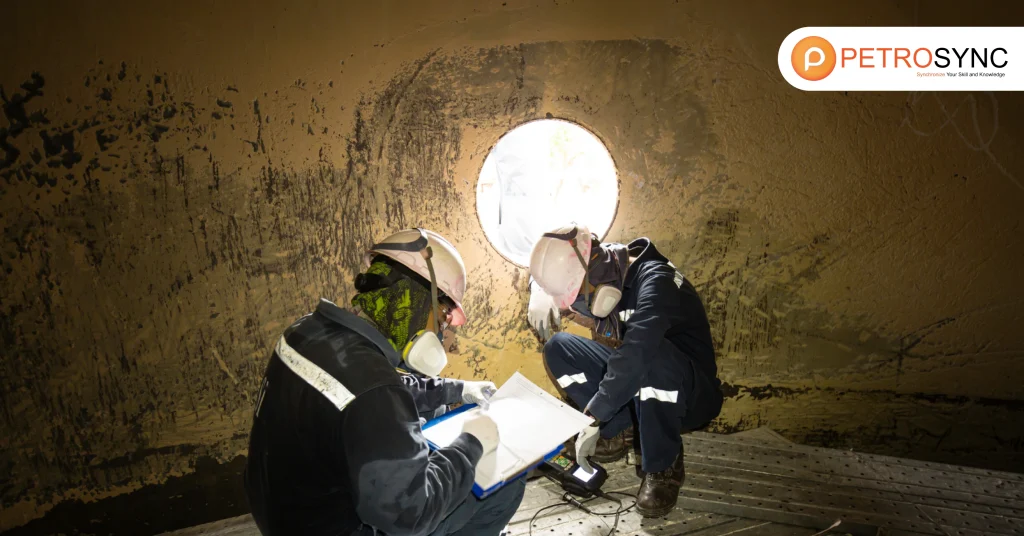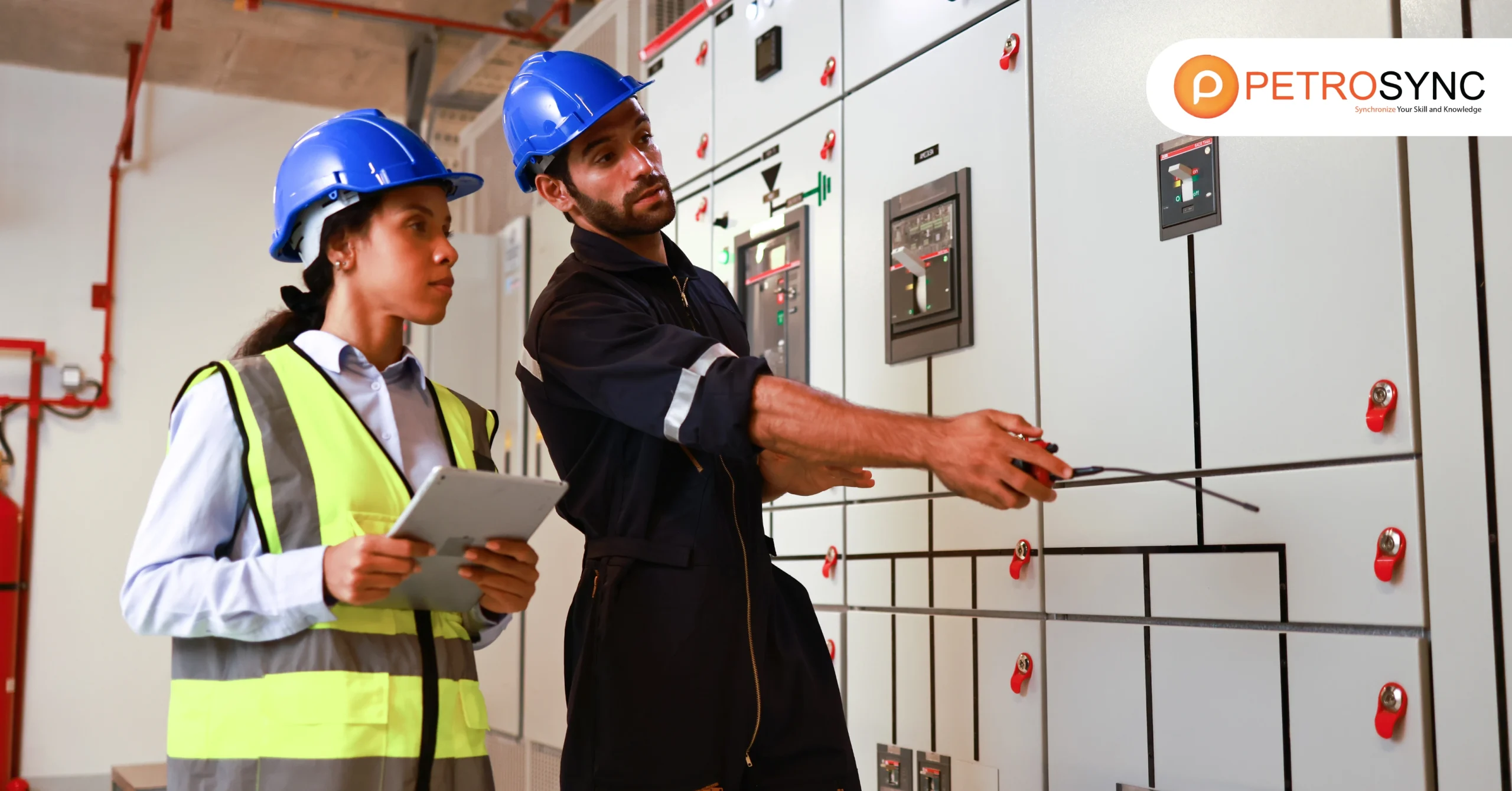The oil and gas sector relies largely on safe and well-maintained storage tanks to function properly. Tank inspection, repair, alteration, and reconstruction are vital activities that ensure storage tanks meet high safety standards.
The API 653 Standard, created by the American Petroleum Institute, is critical in steering these efforts. For professionals looking to deepen their understanding and achieve certification, mastering the API 653 Standard is invaluable.
What is API 653 Standard?

API 653 is Standard sets guidelines for the inspection, repair, alteration, and reconstruction of steel storage tanks used in the oil, gas, petrochemical, and chemical industries. This standard, developed by the American Petroleum Institute, focuses on the safety and integrity of aboveground storage tanks (ASTs) built to API 650 or API 12C requirements.
It specifies procedures for conducting periodic inspections, repairs, and adjustments to keep these tanks in good working order and reduce the danger of leaks, corrosion, and structural failures. API 653 emphasizes corrosion avoidance, tank foundation maintenance, and structural integrity control.
API 653 compliant tanks are fit for service, reducing the danger of catastrophic failure and allowing for the efficient and safe storage of large amounts of oil and petroleum products.
What is the Purpose of API 653?
The API 653 Standard is primarily intended to ensure the safety and operational integrity of storage tanks in the oil and gas sector. API 653 ensures that tanks are physically sound and safe to operate over their extended lifespan by establishing requirements for routine inspections and maintenance.
The standard seeks to reduce the risks associated with tank failures, which can result in considerable environmental damage, financial losses, and safety dangers for people and the surrounding community.
API 653 intends to:
- Proper maintenance and repair techniques can help extend the operational life of tanks.
- Provide guidelines to identify potential issues early, ensuring tanks meet safety requirements.
- Enhance the accountability of owners and operators in preventing leaks and spills.
- For professionals, adhering to API 653 contributes to industry credibility and ensures that the highest standards of tank integrity and safety are maintained.
Is API 653 Certification Difficult?
Obtaining API 653 certification can be difficult due to the specialized knowledge required. Candidates should have a strong understanding of tank engineering principles, welding, corrosion mechanisms, inspection techniques, and repair protocols. This requires gathering extensive knowledge and developing realistic application scenarios.
Additionally, the API 653 exam is noted for its rigor, covering complicated topics such as tank inspections, repairs, and adjustments. However, with the right preparation and hands-on experience, becoming proficient in API 653 is entirely possible.
Many professionals feel that participating in formal training programs gives structured supervision and concentrated study materials, which helps to speed the learning process.
How Do I Get API 653?
To obtain API 653 certification, candidates must go through a structured process facilitated by the American Petroleum Institute. Here’s a brief overview:
- Eligibility Requirements: API requires applicants to meet specific education and experience prerequisites, with variations depending on whether you hold a relevant engineering degree or technical certification.
- Training and Preparation: Many candidates benefit from attending API 653-focused training courses, which offer in-depth explanations of the standard, practical application exercises, and mock exams.
- Application and Examination: Applicants must apply for the API 653 exam through the official API website. The exam itself covers inspection methodologies, repair standards, regulatory compliance, and safety procedures for tank integrity.
- Certification Maintenance: Once certified, professionals must recertify every three years. API 653 holders are expected to constantly improve their knowledge of tank inspection methods while also staying up to speed on industry news and regulations.
Earning API 653 certification not only displays technical knowledge, but also opens up job options in tank inspection and maintenance.
How Often is API 653 Inspection?
API 653 specifies certain periods for conducting periodic storage tank inspections. These intervals vary depending on tank age, construction materials, corrosion rates, and the type of stored substance. Typically, inspection periods are divided into two categories:
External Inspections: Conducted every five years or more frequently if necessary. These visual inspections assess tank condition, signs of corrosion, and any visible damage that could compromise tank integrity.
Internal Inspections: Performed every ten years or more often depending on corrosion rates, product type, and service environment. Internal inspections involve a more thorough evaluation, often including non-destructive testing (NDT) methods to detect potential weak points or corrosion within the tank’s interior.
API 653 inspections are designed to detect issues early on, allowing for repairs or alterations before they pose significant risks. Adhering to these inspection intervals helps extend the operational life of tanks and ensures compliance with industry regulations.
What is the Difference Between API 650 and API 653?
The American Petroleum Institute developed API 650 and API 653 standards, serving distinct purposes for different tank lifecycle stages.
API 650: This standard governs the design, construction, and testing of new aboveground storage tanks. It outlines the requirements for materials, fabrication, welding, inspection, and testing necessary for the safe construction of storage tanks. API 650 is typically used in the initial stages of a tank’s life when it is being manufactured and installed.
API 653: In contrast, API 653 focuses on the post-construction phase. It outlines procedures for examining, maintaining, repairing, and changing tanks after they have been put into service. API 653 strives to extend tank life while ensuring ongoing safety and compliance as the tank ages.
API 650 primarily concerns tank construction and design, whereas API 653 focuses on tank inspection and maintenance. Professionals involved in tank maintenance and operations must be familiar with both standards since understanding the differences provides complete tank management throughout its lifecycle.
Master the API 653 Standard with PetroSync’s Expert Training
Mastering the API 653 Standard requires a combination of theoretical knowledge and practical experience. PetroSync‘s API 653 training is thorough and tailored, allowing industry experts to confidently earn certification. We provide courses for oil, gas, and energy sectors, focusing on tank inspection, repair, and career growth.

Results-oriented and thorough SEO specialist with extensive experience in conducting keyword research, developing and implementing digital website promotion strategies and plans, managing campaigns to develop company websites in the digital world, excellent knowledge of marketing techniques and principles, and attentive strong attention to detail.







